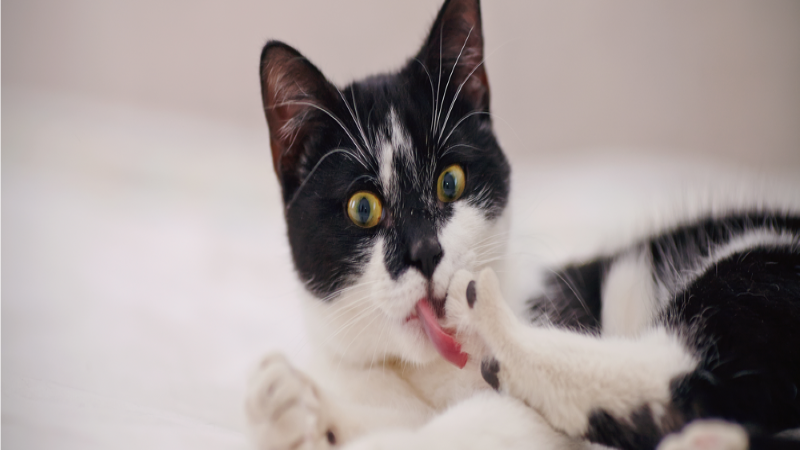The outside. Funny to some, but if you are the unlucky person who comes across a regurgitated mass left behind by your cat, you may not be laughing. In honor of National Hairball Awareness Day (April 29), check out our guide to learn what a hairball really is, and to hear some tips on dealing with this unpleasant problem.
What is a hairball?
Also known as a feline trichobezoar (impress your friends with that one next time your cat is coughing up one of these), a hairball is not actually a ball, but a long cylindrical mass of hair regurgitated by a cat.
Why does my cat have hairballs?
All cats groom themselves. A cat’s tongue acts as a comb, working to remove loose hair. Oftentimes the loose hair is swallowed, and when that hair passes through the cat’s digestive system, it normally travels through the intestines and out in the feces. Sometimes, rather than passing easily, the hair is vomited. Cats with long hair are more prone to hairballs, although short-haired cats are not immune to them. Older cats may have hairballs more often, as their digestive system slows down.
How can I prevent hairballs?
Grooming
Grooming is the number one thing you can do to prevent hairballs. The less hair your cat has, the less there will be to ingest, and the fewer the hairballs. And the fewer the tufts of hair collecting in the corners of your home. If you haven’t tried the Furminator, you should, especially as we head into spring and cats are shedding their winter coats. Ask me, my sister in law, or Dr. Patty Khuly, VMD how we feel about the Furminator. In her blog post, All Hail the Furminator, Khuly endorses the power of the Furminator to save lives (although hairballs are rarely life-threatening), sanity, and marriages. All joking aside, this is a great time of year to head off hairballs by grooming. The bonus? Regular grooming prevents tangles, spreads natural oils through your cat’s coat, and keeps the skin healthy and clean. Check out WebMD’s article, Cat Grooming, for more information on how to brush your cat.
Diet changes
Changing or monitoring your cat’s diet may also help if your feline is plagued by frequent hairballs. Many veterinarians now recommend a grain-free diet for cats. Cats are obligate carnivores, meaning their bodies are meant to ingest a high protein/low carb diet. Researchers believe that grain-based foods, which are high in carbohydrates, may change the flora (bacteria) in a cat’s intestinal tract, and eventually result in the cat being unable to pass hair normally. Check out PetMD’s My Bowl for Cats to see how your cat’s diet measures up.
Natural preventatives
You may also want to try a natural preventative for hairballs, but please make sure to check with your veterinarian first. In her article, Top 8 Vet-Sanctioned Home Remedies for Pets, Dr. Khuly recommends petroleum jelly for lubrication to aid in hairball elimination and to help with constipation. See our post, Top Ten Household Remedies for more natural remedies for your pet.
Visit your veterinarian
While hairballs are a fairly normal part of a cat’s life, they can also be a sign of a serious illness. In her post, Should I Be Worried About My Cat’s Hairballs?, Dr. Jennifer Coates says as long as your cat is not coughing up hair more than once a week or losing weight, it is ok to try the above recommendations. However, if they do not work, it is important to take your cat to the veterinarian to have a thorough examination.
Let pet insurance keep you protected
Many pet owners believe that only dogs need pet insurance, but that's not true! There are many reasons why you may want to enroll your cat with pet insurance, including protection against unexpected accident and illness vet bills. Get a quote today!

